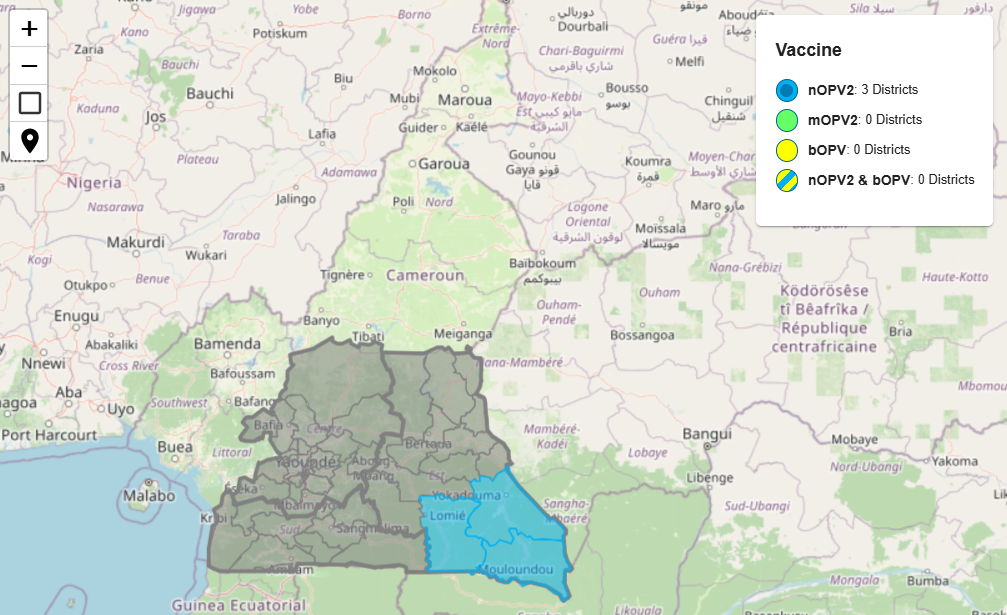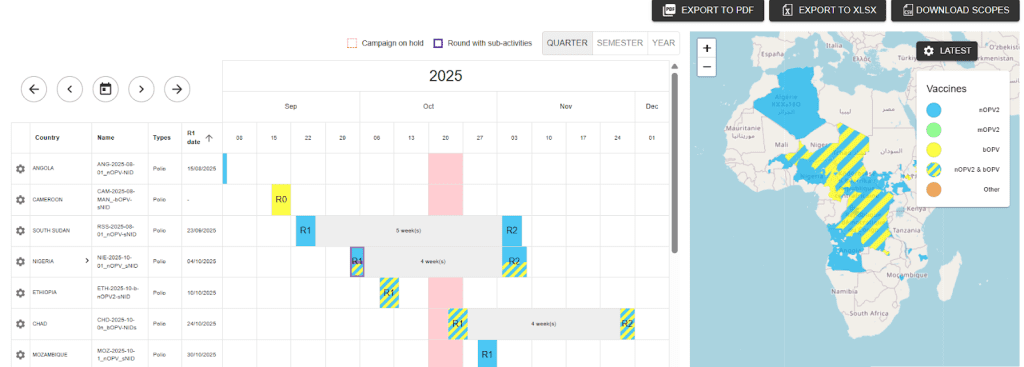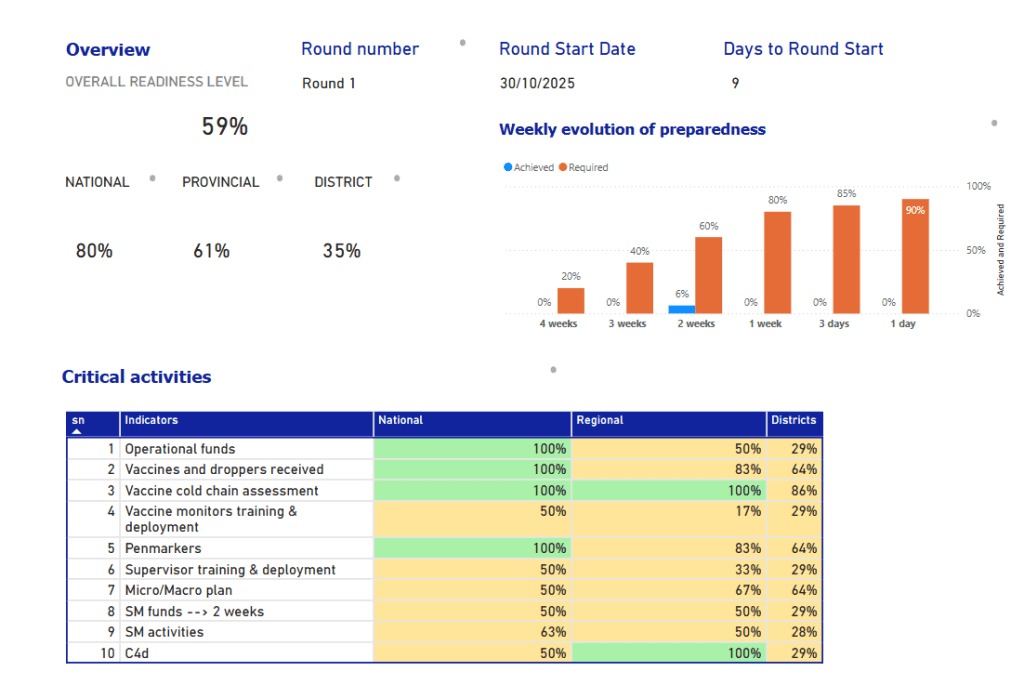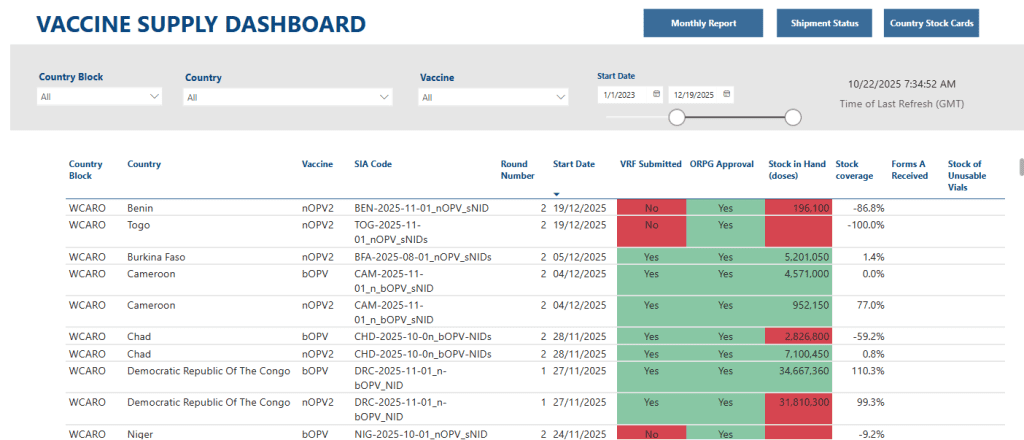
Polio eradication remains one of the most ambitious public health objectives in modern history. Despite remarkable progress, achieving and sustaining eradication demands innovative digital solutions, timely data, and strong partnerships. Since 2021, Bluesquare has been proud to support the Global Polio Eradication Initiative in enhancing data systems and visualizations that make every outbreak response smarter, faster, and more efficient. In honor of World Polio Day, we highlight some of these tools within the Polio Outbreaks initiative to exemplify how digital solutions and partnerships can accelerate progress towards a polio-free world.
At the start of our engagement, polio outbreak response data existed in silos. Information about virus detection, planning, vaccine stocks, and campaign results was scattered across multiple systems, making it difficult for teams to see the full picture and make timely, evidence-based decisions.To bridge this gap, Bluesquare developed an integrated digital ecosystem using the advanced capabilities of IASO to streamline data integration and visualization to connect all steps of a polio-campaign lifecycle together.
Let’s take a closer look at some of the platform’s highlights and how they help centralize essential data for GPEI teams across the world.

Poliooutbreaks platform, used by the WHO AFRO RRT team and GPEI coordinators. This is the public calendar deciphering upcoming Polio campaigns, including details such as scope, vaccine type, and target age groups.

Preparedness Dashboard indicating campaign preparedness levels ahead of the start date.

Supply Chain Dashboard: pulls platform data onto the supply chain dashboard, indicating stock levels and coverage for upcoming and past campaigns.

LQAS Results: allows users to understand the results of a LQAS survey after a polio campaign has occurred, visualized on a map on the AFRO region or at country/district level.
The journey toward Polio eradication is not over. The final challenge—reaching “zero-dose” children in the most high-risk geographies will require advanced, geo-enabled microplanning and better use of data.
The tools developed for polio campaigns are not limited to a single disease—they can be adapted to strengthen a wide range of vaccination and public health efforts. The platform has already been expanded to support campaigns for measles, yellow fever, and vitamin A supplementation, demonstrating how integrated digital solutions can improve planning, monitoring, and evaluation across diverse health initiatives. By applying these tools more broadly, health organizations can ensure that data is managed more efficiently, decisions are better informed, and resources are deployed where they are needed most.
Polio eradication requires more than vaccines—it requires visibility, coordination, and inclusion. Bluesquare’s commitment to open, interoperable, and equitable data systems helps ensure that no child is left behind. Together with the GPEI partners, we continue to transform data into action, supporting a polio-free future through smarter digital health.